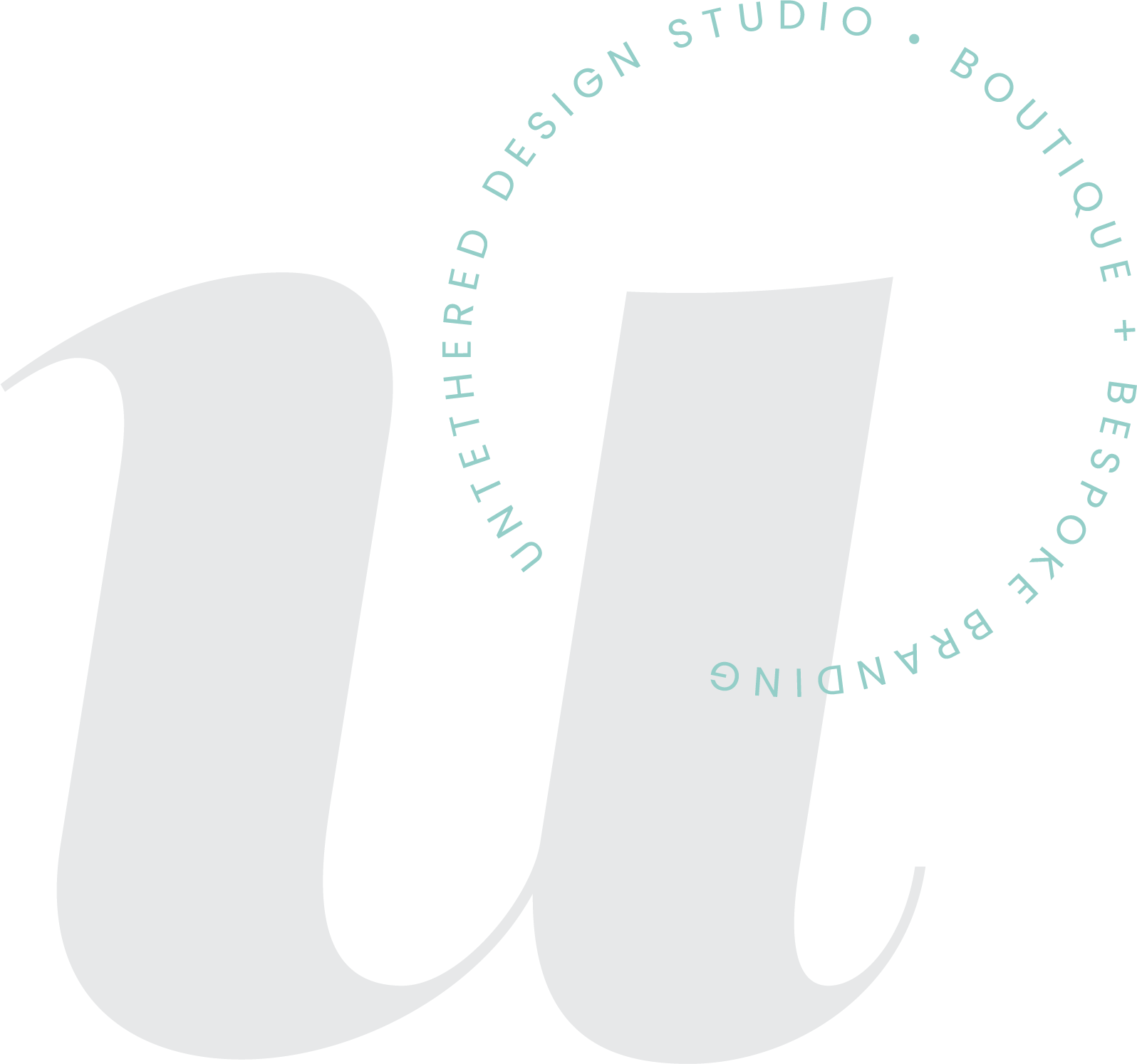5 steps to take before you hire a designer
We see it all too often, and it's like watching someone swimming in a lightning storm. SBOs and entrepreneurs slap a shiny new logo or business card on an idea that hasn't been thought through yet because they're sure it's the piece they need to create a successful business. YIKES, you like to live dangerously, dontcha?!
Not only does this often create a flat brand, it can create inconsistencies in messaging because there isn't a north star or foundation to work from. Can your business be successful still? Sure, you'll probably start to figure these things out one at a time, thousands of dollars and countless hours later. But, it's going to take your customers AWHILE to trust your brand, remember who you are, or take you seriously.
Ultimately, you'll be taking the long route to figure out what I'm about to share with you.
Thankfully, you're reading this message and (cleverly) decided to set your brand and business up the right way! You go, Glenn Coco! Before hiring a designer to create your visual identity, follow these 5 steps to establish a roadmap for your brand.
Step 1: Research Your Competition
This may sound obvious, but before you create a brand, you need a product. But not just any product. A product with a strong market fit, something that isn't already available. Doing a little research into your competitors goes a long way in determining whether or not your product is (a) needed and (b) already out there. If someone has already snatched up your idea (those vultures!), how might you be able to create a unique offer? Is your product addressing a different pain point? Will it be marketed to a different clientele? Or, is there an opportunity to establish a unique process or story behind your brand? Either way, you'll want to make sure there's room for you in the industry before you spend a dime on branding.
Step 2: Establish Your Product
Congrats! You've found a hole in the market where your brilliant idea can make a killing! Tough part is over right? Hmmm, not quite. Next you need to make sure that you have a revenue model and can actually make a profit. You know, money? That little thing that none of us like to think about but all of us need. The best way to test your product out is to create a kind of lo-fi sample, or a minimum viable product (MVP) as we in the biz like to call it. Think of your MVP as a kind of Costco sample of your product. It can be used to gauge your COGS (cost of goods sold) and test your product or idea with your key demographic. There's a ton that you can learn from user testing that may have some impact on your branding too.
Step 3: Determine Your Customer
As you begin testing your product (or service), you'll start to notice characteristics of users that are drawn to it. You likely won't have enough data to make a robust customer persona at this point, but you can garner personality traits, likes and dislikes which will help you determine who your target audience is. Once you have this information, it becomes easier to know how you should talk to your customer, which in turn will give you the framework for your brand voice and identity. Look for things like personality traits, male/female, interests, and location.
Step 4: Define Your Purpose
You'll frequently hear about 'defining your why' in business. This somewhat generic phrase is referring to the reason your product or service exists and what you stand for, your core values. Let's say that you have a coffee company, but you only buy coffee beans from responsibly grown farms (if that even is such a thing). That's something you are going to want to reflect in your branding and messaging. It can affect the visual elements too, so it's a good idea to note what's important to you in terms of your product.
Step 5: Choose a Name
What's in a name? A lot, actually. Your name is the shortest, simplest explanation of your product. It should not only tell your customer what you're selling, but what the personality of your brand is. For example, are your products authentic and trustworthy (ex. Honest Company). Is the most important thing the value that they create for customers (ex. Dollar Shave Club)? Is your brand going to be rambunctious with a surly sense of humor (Dick's Last Resort)? A good rule of thumb is that you should spend as much time thinking about the name of your brand as you do on all of the branding elements combined. After all, once you choose it, you're kind of stuck with it. Sure, there are some ways to work around it, but ultimately you'll save a lot of money if you get it right the first time. Not only that, but it's pretty difficult to create a logo without it!
ROBYN YOUNG is the Founder and Head of Strategy at Robyn Young & Co. She is a branding specialist and compulsive maker of things. An ambitious young creative with a strong vision and eye for creativity, Robyn's main focus is a seamless connection between strategy and design. With a professional pedigree that includes market research for top commercial brands like Nike and Target, as well as branded content for UCLA, Modern Luxury and Everyday Health, Robyn has a vast understanding of what sticks.
Now as the founder of her own branding studio, she pours passion into everything she does — brainstorming unique brand strategies, overseeing the creative process, teaching workshops on branding, building a DIY Branding online program (coming 2018), and offering inspiration (and the occasional pep talk) for other startups.
Learn more about Robyn and her studio over at robynyoung.co.


